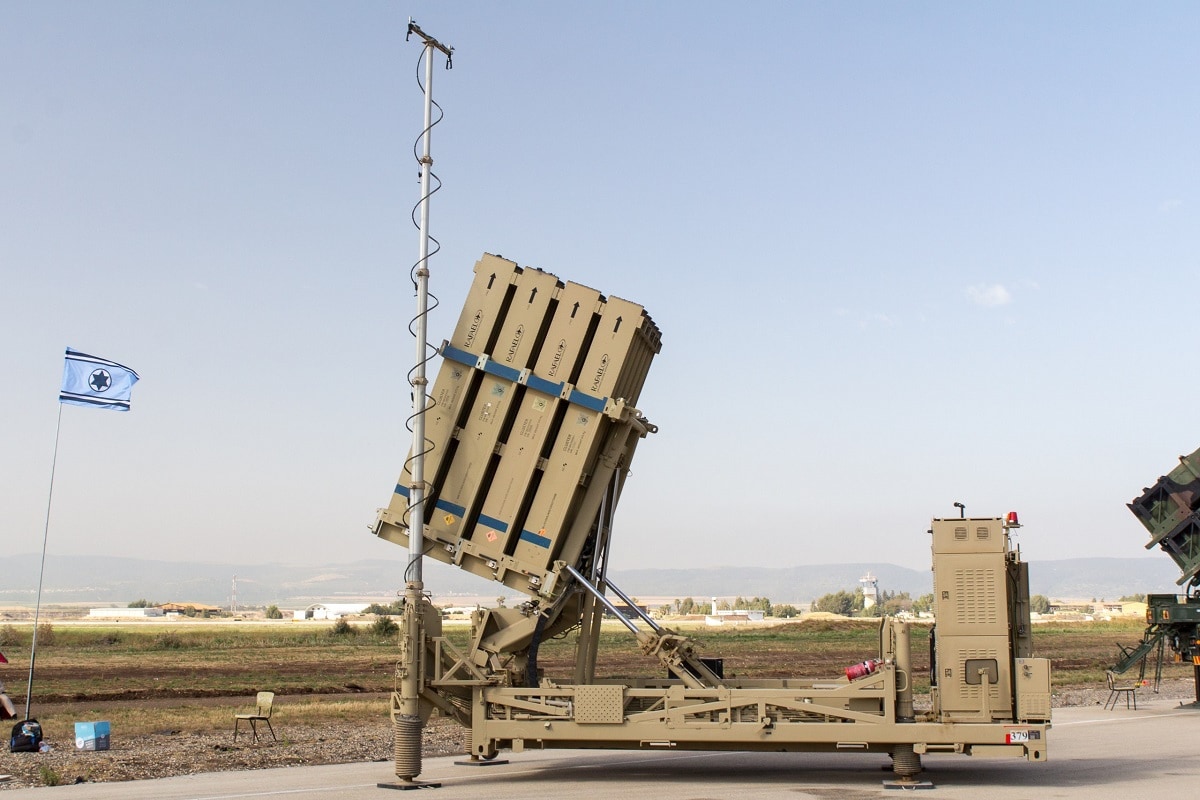Earlier this month, Israel’s Iron Dome missile/rocket defense system intercepted a rocket over the coastal city of Ashkelon. Launched by Palestinian militants, the projectile was the first one fired at the Jewish state from the Gaza Strip since April.
The Iron Dome has been a critical component of Israel’s aerial defenses for over a decade. With a success rate of 90%, the Dome’s ability to take out short-range projectiles launched from Hamas-controlled Gaza has been an instrumental asset for the Israel Defense Forces. Watching the Dome in action is truly remarkable – videos depicting its interception system at work have circulated widely. In March, the U.S. House of Representatives approved $1 billion in funding for the Iron Dome’s interceptor missiles.
“To the US taxpayer, it might seem that helping Israel pay for its own defense is a misuse of their taxes, but the reality is that strong defenses help to prevent a war, which is inherently much most costly and would threaten core US interests like stable energy markets, protection of a fellow democracy, limiting the spread of terror groups, and keeping odious regimes like Iran from gaining even more power to dictate events in key regions,” explained Dakota Wood, a military expert and Senior Research Fellow at the Heritage Foundation.
Innovating to Save Lives
Israel’s need for an advanced missile defense system emerged in 2006, when the Lebanese-based, Iranian-backed group Hezbollah launched thousands of rockets into the Jewish state. Dozens of Israelis died and mass evacuations ensued, forcing the government to prioritize the introduction of a system that could protect its air space effectively. The Iron Dome was deployed in 2011, and in that same year it intercepted a rocket launched from Gaza for the first time.
The system was designed by Rafael Advanced Defense Systems and Israel Aerospace Industries to intercept and take out short-range projectiles launched from distances ranging from 2.5 miles to 90 miles. The Dome is equipped with a radar that can locate approaching rockets, a command-and-control system that ascertains the threat level, and an interceptor that can destroy the weapon prior to its impact. The Iron Dome relies on the high-resolution EL/M-2084 Active Electronically Scanned Array radar to detect incoming rockets and missiles. Once a projectile is detected and deemed a threat, one or more interceptors are launched to combat it.
The Dome has no doubt saved countless Israeli lives over the years. In the latest May 2021 Hamas-Israel conflict, the Dome successfully thwarted over 90% of 4,000 rocket barrages targeting civilian areas in Israel. Without its cutting-edge air defense, Israel would witness many more civilian casualties, which would force the IDF to impose harsher retaliatory measures, ultimately leading to more deaths.
Not a Perfect System
While the Iron Dome is the mainstay of the Israel Defense Force’s air-defense program, it also has its downsides. Each interceptor costs between $20,000 and $100,000, according to Forbes. Since Gaza-based militants typically launch hundreds or even thousands of projectiles during prolonged periods of conflict, this could add up to a very expensive form of defense. Additionally, the Dome is not immune to swarm tactics. Militants have begun to understand how to overwhelm the defense system by launching saturated strikes from shorter distances.
The Iron Dome is not a perfect system, but it is a critical component of the IDF’s defense protocol. In May, Israel’s Ministry of Defense announced the successful test launch of its laser missile defense system. Once officially unveiled, the “Iron Beam” will strengthen Israel’s already robust air defense capabilities.
Maya Carlin is a Middle East Defense Editor with 19FortyFive. She is also an analyst with the Center for Security Policy and a former Anna Sobol Levy Fellow at IDC Herzliya in Israel. She has by-lines in many publications, including The National Interest, Jerusalem Post, and Times of Israel.
Note: This piece has been updated to include comments from Dakota Wood, a senior military expert.

